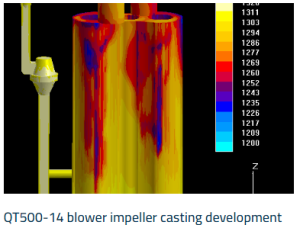Casting Off: The Metamorphosis of Electric Vehicle (EV) Production
The most important element of the basic technical drawings used in the chassis, the foundation of electric motors, batteries and other important ingredients of the automobile industry in general. One of the key elements in the manufacture of these chassis is the process of casting, which is also known for its accuracy and speed. Casting, with techniques used in a highly advanced way, has unchallenged strength, meability for designs and costs that make it suitable for the specific requirements of the electric vehicle landscape.
Weight: optimized strength to weight and optimized durability
Building a Robust Foundation
The chassis of an EV needs to be far stiffer and stronger than the one a gasoline-powered vehicle because, after all, it needs to hold up a lot of weight -- weight, primarily, that results from loads of heavy, bulky cookies. Single piece castings can be cast together to form more complex structures and get rid of join lines and weak points which are synonymous with chassis that are assembled. Such an integration improves the overall rigidity of the chassis, something that is extremely critical for safety and dependability of the car. Aluminum and magnesium, for instance (two popular choices of materials for EV chassis) can be cast into very dense and rugged forms significantly stronger than its welded or bolted counterparts both in strength tests and under daily-driving use.
Flexibility & integration of design
Structures for Innovation Tailoring
With their large battery packs and complex electronic systems, electric vehicles require Casting Electric Vehicle Chassis designs. Casting allows metals to be cast in ways not possible with other forms. This feature is incredibly important in how the layout of battery housing, along with motor mounting, and everything else is where square inch of the chassis goes to best use. Casting allows the manufacturer to combine several features into one single part, resulting in fewer parts and easier integration at the vehicle assembly.

Cost Efficiency in Production
Scaling Economically
In terms of mass production, casting is more beneficial economically. High-volume production runs will amortize the upfront investment in casting molds and setup with a low per-unit cost. This scalability is very beneficial, especially for an electric vehicle sector that is said to be in the phase of a hockey stick growth curve. The use of casting methods has allowed EV manufacturers to benefit of a reduced cost of production, which translates into more cost-effective EVs for the public.
Weight Reduction for High-Performance
Cutting Down on Calories, Increasing Performance
Low-weight is an essential basic certainly, one that benefits both range and efficiency. There are lightweight metals such as aluminum and magnesium used for casting that are much lighter than conventional steel. By receiving them in cast complex, thin-wall creations, these parts offered the right balance of structural toughness yet total vehicle weight savings. The car maker has a goal to introduce electric cars that have a longer range and are more efficient, and that will only happen with a reduction in weight.
Environmental Impact
Promoting green industry.
Not to mention that casting is a more sustainable mean of production in comparison to traditional fabrication techniques. This minimizes waste by shaping molten metal into the finished shape with a form-factor close to the final product shape. Furthermore, the recyclability of materials like aluminum used in casting processes helps to advance the sustainability drives of the electric vehicle industry and meets overall environmental goals.
Conclusion: More Than Just the Heartbeat of EV Chassis Manufacturing
The role of casting is essential in the production of e-chassis because it infuses strength, design freedom, affordability and eco-friendliness almost respect. Casting is critical to driving the innovation and efficiency automakers must deliver to meet the needs and demands of the expanding EV market, and for the growing complexity of automotive technology.
